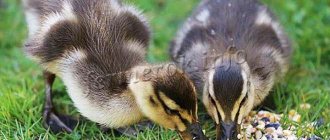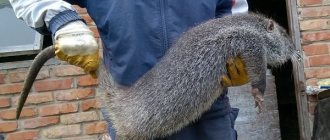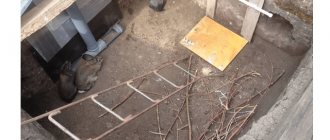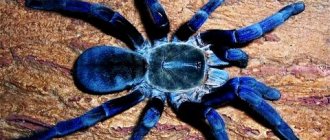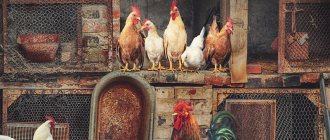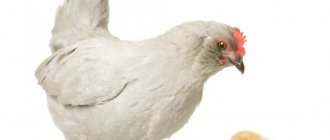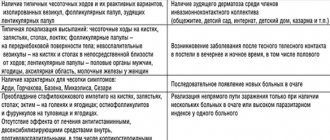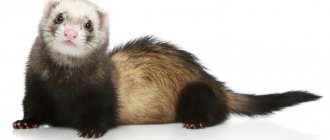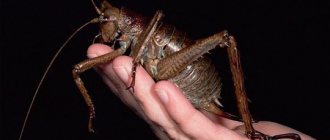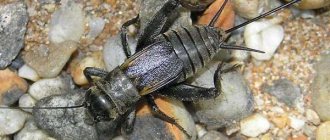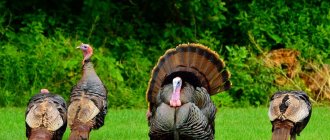- Pickling
- Drying
The undoubted benefits of breeding rabbits lie in the possibility of obtaining not only dietary meat, but also quite expensive fur, especially from representatives of specialized downy breeds. Dressing rabbit skins at home is a difficult and labor-intensive task. However, having mastered the existing rules and understood all stages of this process, each farmer will be able to make his farm as profitable as possible.
Technologies for dressing the skins of fur-bearing animals have existed since ancient times and continue to improve.
Skinning rules
A rabbit suitable for slaughter must weigh at least three kilograms. You need to slaughter a rabbit after reaching a certain age and after going through the molting period. You need to use a stocking to remove the rabbit skin. The animal carcass is tied by the hind legs, head down, and skinned. This is a labor-intensive process that requires skill.
The procedure can be divided into several stages:
- Incisions are made on the hind legs around the circumference of the hock joints. The incision continues along the inside of the leg and perineum. The tail is cut off.
- The skin is folded down, carefully avoiding the area of the genitals and tailbone. The main thing is not to accidentally damage the intestines and bladder and not spoil the fur with their contents.
- When the skin “lowers” to the level of the front paws, you can make circular cuts on the forearms or simply chop off the limbs. Some professionals manually separate the skin from the muscle by inserting a finger under the skin. Both of these methods are equally effective.
- The “stocking” is removed from the head, making a circular incision. If it is necessary to remove skin from the muzzle, special cuts are made around the mouth, tip of the nose and eyes. The ears are removed and the skin is completely pulled off. You need to remove the skin from the rabbit quickly so that the blood does not have time to bake.
The meat goes for cutting, and the fur goes for further processing.
Pre-drying
After skinning, the skin is carefully cleaned from the inside to remove muscles and subcutaneous fat. This should be done quickly, before the meat dries and hardens. It is better to use a dull large knife with a square blade.
The skin needs to be stretched using special rules. They can be made of metal wire or wood.
The following types of rules are suitable for rabbits:
- adjustable;
- in the form of a fork made of slats;
- from one board;
- Rogulin from a branch of a bush or young tree.
It is very important to properly tension the hide. The limbs should be positioned symmetrically, the head should be exactly in the center, the legs should be straightened. The fur coat is pulled with little effort - stretching it too much can cause the fur to become very thin.
Dressing rabbit skins at home begins with proper drying. Fur should be dried in a well-heated room at a temperature not exceeding 30°C. You need to keep your future fur coat away from artificial heat sources, high humidity and drafts. In summer, you can dry rabbit fur outside in the shade.
You must not allow the skin to dry out - in this case, the raw material will deteriorate irrevocably due to the fragility of the skin. It is also necessary to monitor the safety of the fur: cats, dogs, rats can smell the remains of meat and fresh blood.
Repairing cuts and tears
It often happens that when processing the skin with a knife, marks remain on it in the form of cuts and tears. It is necessary to repair these defects. Sewing is done by hand using a thick needle and white cotton thread size No. 10.
The skin is turned inside out and the edges of the cuts are carefully sewn together with a seam called “over the edge.” At the same time, you need to make sure that the skin does not tighten. The area that has been repaired should not be visible on the front side. To do this, use the same needle to tuck the hairs inside the seam.
Required Tools
It is recommended to work with skins in late autumn (October-November depending on the region), when the animals have already moulted. Before you start processing rabbit skins at home, you need to prepare the necessary equipment.
You will need the following:
- sharp knife;
- reagents;
- salt;
- Ruler for drying finished skins.
Primary processing
In order for the dressing of rabbit skins to give a good result, preparation should be carried out in advance. Slaughter occurs when individuals reach 8-9 months. In this case, you need to try not to damage the skin. The skin and fur must be removed in one piece. After trimming with a knife near the legs and from the back, it is all pulled down.
Primary processing is carried out immediately. Using a knife, remove the remaining pieces of meat and fat. If they dry out, cutting them will be much more difficult. All large debris stuck in it is removed from the fur. The canvas is stretched onto a wooden surface. The knife makes circular movements. This makes it easy to get rid of the layer of fat and remaining muscle. If tears appear, they must be sewn up.
Preparatory work
Removing dirt and blood
Before you start dressing rabbit skins, they need to be cleaned of dirt. Sometimes during skinning the fur may become dirty. In this case, it is necessary to wash the skin in a freshly prepared solution. In a liter of water you need to dissolve 10 grams of soda ash and a 100 gram piece of laundry soap. It is necessary to “wash” each coat in the resulting mixture.
For one kilogram of raw materials you will have to use at least 4 liters of solution. The soap mixture should be warm, but not hot. The optimal temperature is 35-37 °C.
Soaking
This process takes from one to three days. The skins are placed under a weight in a saline solution (55 grams of table salt per liter of water). To prevent parasites from appearing or putrefactive processes to begin, antiseptics are added to the water.
Can be used:
- Formalin (1-1.1 grams per liter of water). Use with caution, as the substance is volatile and harmful to humans.
- Sodium bisulfite (2-2.5 grams per liter of water).
- Norsulfazole (2-3 tablets per liter).
The skins should soak and become soft to such a state that they can float freely in the thickness of the solution, but not float to its surface.
To determine the completion time of soaking, you need to pull out a few hairs from the groin area of the skin. If the fur comes out easily, the process can be considered complete.
Flesh
The mezdra is a thin layer of subcutaneous fat and muscles that lift the hairs. All remaining meat must be completely removed. To do this, use a scraper or the back of a knife.
It is important to observe the direction of movement of the blade: from the tailbone to the head, from the center to the edges of the coat. It takes skill to make the skin thin and uniform in thickness over the entire area. The knife should be directed away from you, with short, slow movements.
Degreasing
To completely remove fat, you need to prepare the following solution. Two grams of laundry soap or three grams of washing powder should be mixed with one gram of soda ash, then add everything to a liter of warm water. The skin must be kept in the solution for at least fifteen minutes and stirred periodically.
The next stage of degreasing is washing in a mixture of 0.5 grams of soda ash and 50 grams of table salt per liter of water. You need to let the liquid drain, then wipe the inside dry and pull the fur coat back onto the straightener.
Flesh
This stage of dressing rabbit skins is necessary for thoroughly cleaning the skins from residual fat, tendons and muscles. This also loosens the tissue on the side of hair growth, which greatly facilitates subsequent processing, since tannins will be able to penetrate to a greater depth.
The process goes like this:
- Remove remaining moisture from the wet skin using a dry cloth.
- The skin in the form of a stocking is pulled onto a special blank or placed in another convenient way.
- Use a scraper or the blunt side of a knife to scrape, first along the ridge from the tail to the head, and then in different directions from the ridge.
If the skin has not been dried, but has just been removed, then scraping can be done simply by hand. It is necessary to ensure that the material has the same thickness over the entire surface.
Dressing
Pickling
This process strengthens the skin. It is considered a higher quality and more expensive analogue of pickling. When fermented, strength is achieved that is almost twice as strong. Upon completion of the process, a tensile test must be performed.
The starter consists of the following components:
- 200-230 grams of rye or oatmeal;
- 7-8 grams of yeast;
- 25-30 grams of table salt;
- 50-55 grams of baking soda.
Dissolve all this in a liter of hot water; in the resulting jelly-like substance, you need to leave the skins with the inside out until they swell. For one kilogram of rabbit fur coats you need three kilograms of starter.
The whole process takes three days; it is recommended to mix and turn the rabbit skins several times a day. The appearance of the smell of bread and a white coating on the flesh signals the completion of fermentation.
Pickling
In this case, the raw materials are processed using acids. There are several ways to carry out this process depending on the reagents chosen.
The most popular solutions:
- Dissolve 50-55 grams of table salt and 20-25 grams of vinegar essence in a liter of slightly warm water.
- Per liter take 8-8.5 grams of one-molar hydrochloric acid, 55 grams of table salt and 6 grams of baking soda.
Rabbit coats should be kept in the vinegar mixture for 36-48 hours, in a solution of hydrochloric acid - 12 hours.
Neutralization
Further processing of rabbit skins is impossible without neutralization. It must be carried out to remove residual acids. After pickling, the skin must be rinsed in a solution of baking soda with a concentration of 120 grams per liter. Then the raw materials are thoroughly squeezed out, folded with the flesh inward, one under the other, covered with film and left under load for 1-2 days.
Tanning
Tanning is the most important process. It is divided into two types depending on the substances used.
Tanning happens:
- chrome (reagent – chrome alum);
- tannin (oak bark and willow branches are used).
Seven grams of chrome alum and fifty-two grams of salt are mixed in water (1 liter). It is enough to soak the skin in this solution for 24 hours. Sometimes another method is used: the inner skin and the fur itself are wiped with this solution every 6-8 hours for three days.
Tannin tanning is time-tested; it was used by our distant ancestors. Place oak bark and willow branches in a container, add water and bring it to a boil, preferably over an open fire. You need to cook the mixture for at least half an hour, then add a solution containing 53 grams of salt per liter of water. The resulting decoction is applied to the rabbit flesh with a brush.
The use of oak bark without the addition of willow gives a yellowish tint to fur and skin, so only dark-colored skins can be processed with this method.
Zhirovka
After tanning, the skin needs to regain its elasticity. For this purpose, fats or other fat-like substances of natural composition are used.
The most common options:
- Livestock fat - lamb, beef, pork. A kilogram of fat, 100-120 grams of laundry soap, 5-10 milliliters of ammonia are mixed in warm water (1 liter).
- Half of the fat can be replaced with chicken yolks, 6-8% with glycerin and 5-7% with machine oil. In this case, the composition of the mixture contains less organic matter, so the likelihood of various microorganisms multiplying in it is lower.
Any type of fat mixture is applied to the raw material and left for 4-5 hours. Excess fat must be removed with chalk or tooth powder.
FATING (FAT).
This operation gives elasticity to the raw material. The absorbed fat protects it from cracks and kinks, both during cutting, sewing, and during wearing of finished products.
For further operations you need to stretch the skins on the rules. Their design may be different. I use the same ones as for the initial drying of skins after slaughter. After pulling our semi-finished product onto the rules, we wait until all the moisture has drained. Usually 5 hours is enough for this. The skins should not be placed in the sun or placed near a heater. The material should be slightly damp.
DO NOT try to overstretch the skin base, the main thing is that you do not get wrinkles. If you correctly pulled the skin onto the rule, then its width in the middle part should be 3 times less than its length, and all four “legs” are located symmetrically.
To prepare a fat emulsion, take half a kilogram of animal fat. “Native” rabbit, collected during the initial processing of skins and from its internal organs, can also be used as such. But usually there is not enough of it, so pork is often used. Beef and lamb are not entirely practical, as they quickly harden at room temperature. First, melt the fat over low heat, then grate 200 grams of laundry soap into it and dissolve it by stirring. Next, pour in 1 liter of water and continue stirring until a homogeneous mass is obtained. And finally add 20 grams of ammonia. Let the resulting mass cool slightly, to about 60-70°C, and begin the fattening process.
| Subscribe to our website's weekly newsletters: ✦ BROTHER RABBIT ✦ Current notes on keeping rabbits are waiting for you. SUBSCRIBE |
Apply the emulsion to the skin using a regular paint brush in an even layer. Be careful not to touch fur-covered areas, as they will be severely damaged. If you still cannot avoid defects, you can try to remove the contamination with B-70 gasoline or solvent. If there are a lot of skins and the process takes a lot of time, you need to periodically heat the fatliquor. After this, turn the skins fur side out and wait 3-4 hours until the fat is absorbed. And finally we proceed to final drying. To do this, we cut the almost finished raw material along the belly line and hang it in the room for several hours on a rope, securing it with clothespins. During drying, it is recommended to periodically stretch the skins with your hands, getting rid of possible wrinkles.
Drying
The process of processing rabbit skins ends with drying. Final drying of raw materials is most often done after fattening. The skin must be straightened, stretched on a straightener and left in the fresh air or in a room with free access to air. Do not leave fur coats near artificial heat sources or in direct sunlight. After drying, the raw material is kneaded, chalk or tooth powder is shaken out, and the fur is combed with a brush.
The shelf life of the manufactured product is almost unlimited. Experts advise storing skins in bags made of linen or other natural fabric.
It is strictly forbidden to store finished products in plastic bags!
Where to begin
It is a set of sequentially performed operations. The quality of the fur will depend on the careful and correct execution of all stages.
- The preparatory stage is conservation.
- Soaking (soaking).
- Fleshment.
- Degreasing.
- Pickling.
- Curing and neutralization.
- Tanning.
- Zhirovka.
- Drying and kneading.
You can get high-quality meat and skin only by following the rules of slaughter. The process may be unpleasant in theory, but is not so difficult in practice. No breeder who wants to sell rabbit products can do without it. In this article you will learn how to kill a rabbit.
Experienced farmers advise not to neglect these points, since they directly affect the profitability of the business.
Alternative finishing options
Fermented milk method
In this case, the cleaned and defatted pieces must be steamed, rubbed with large crystals of table salt and stored for three days, with the fur coats folded inside out. After this, the salt must be shaken off, and the skins must be soaked for three days in sour milk, with the inside out. To process a medium-sized skin, you will need approximately a liter of sour milk.
This method, which allows you to quickly repair a rabbit skin, is distinguished by its simplicity, accessibility and high quality of the finished product.
Fresh-dry
The skins should be stretched on straightening boards with the inside outward so that the sides of the skin are located along the edges of the structure. During dressing, the skin must be stretched in length so that the width is three times smaller. Nails or rope can be used to ensure that the raw material is evenly stretched. To prevent insects from breeding in the fur, it is necessary to treat it with sawdust soaked in gasoline.
Degreasing
In fact, this is an ordinary wash for the final removal of residual fat from the surface. It is made using soap or washing powder. You can also use a few drops of dish soap.
The temperature of the solution should not exceed 40°C. Washing should be continued until the skin acquires a light shade that is pleasing to the eye. The hairs of the fur will begin to creak slightly.
Washing should not last more than an hour so that the alkali contained in the detergents does not damage the material. After finishing, the skin should be rinsed several times in clean water and allowed to drain. Wipe the resulting flesh with a cloth soaked in gasoline.
Types of skins
Finished products are divided into four quality classes. The first is considered the most expensive. Rabbit skins of the fourth class are rarely used as material for sewing clothes.
First
The skin is full-haired, the fur is smooth, thick, soft. There are no small bald spots or fur defects. The flesh is dense, clean, and has a uniform color. Only small blue or blue spots are allowed on the skins of gray and blue rabbits. The area of these spots should not exceed 3% of the total area of the product.
Second
In this case, incomplete development of spinous hairs and uneven fur density are allowed. In some places the pile may be incomplete. The flesh is thin, blueness along the line of the spine or spots up to 15-35% of the area is acceptable. It is already relatively difficult to beautifully tan a rabbit skin of this quality.
Third
Low, short pile in long-haired breeds. A small amount of fluff or partial absence of guard hairs. Dull thin core, blue discoloration and other color defects over the entire surface.
Fourth
Sparse uneven pile. Most often, this option is observed during unplanned slaughter during the molting period. There are bald spots, the pile falls out, there is no spine on the spine of the skin. The flesh is defective, has stitched tears (no more than 50%), blue color, lumps on the surface and other irregularities.
Curing rabbit skins of this type is not very profitable, since it takes a lot of time to give low-quality fur a good appearance.
THE FINAL MARATHET.
We perform mechanical kneading with movements reminiscent of removing dirt from clothing. To give the skin a marketable appearance and get rid of excess fluff and irregularities, use fine sandpaper or pumice.
KNEAD WELL until the skin of young rabbits up to 4 months of age is soft. If you want to process the skin of an old rabbit, especially a male one, you will have to work longer as the material will be rougher and thicker. At enterprises, special warm-up machines are used for these purposes.
We remove excess fat and make it whiter by rubbing with tooth powder or high-quality chalk. And finally, we knock out the skins and comb the pile using a massager. If you did everything correctly, you will have clean, shiny, soft and fluffy skins with elastic fur in your hands. Now you can safely cut them and use them to sew beautiful, warm and practical fur products.
I hope that after reading this article and watching the video, you will have no more questions and, having prepared the necessary reagents, you will confidently take up the preparation of skins.
But for the most ambitious of you, I have prepared material on how you can become a real pro, gain the necessary knowledge to open a new serious business, and perfectly master the honorable profession of sanding. We'll talk about this in the next article.
Please share this article with your friends on social networks:
Please rate the article. Ask a question, discuss on the forum.
Drying stretch
To ensure uniform, high-quality drying of rabbit skins in household conditions, they are fixed with small nails on special devices (rulers) with the wrong side (inside) facing out. In this case, it is not recommended to pull the skins too tightly, since in this case there is a danger of damaging them.
To ensure that the skin does not form wrinkles, does not wrinkle and dries evenly, weak tension should not be allowed. After installing the spacer, you can hang the material to the height of a person. It is important to take care of the strength of the rope, since removing the processed skin requires some effort.
The raw material must be placed on the rules with the fur inward, paying special attention to the symmetrical arrangement of its individual parts. In addition, you should carefully straighten out any existing wrinkles. It should be dried with good air circulation and low humidity in shaded areas.
Material storage
The skins can be processed immediately. If this is not possible, then they should be dried. This is carried out in a ventilated room with a temperature of +30 degrees for 2-3 days.
Over-drying is unacceptable, as the skins become brittle.
For drying, special sliding structures in the form of a triangle are made. The skin is stretched over the side walls and nailed to it. A bar is inserted from below, which pushes the side walls apart. Such products are universal; they can be stretched with fabrics of different sizes.
The material is placed with the fur inside. Moderation should be observed in tension. If the tension is weak, the skin will lose size. If it is strong, the fur will thin out. If you plan to start work immediately, then the workpieces are sprinkled with salt while the materials are being prepared.
